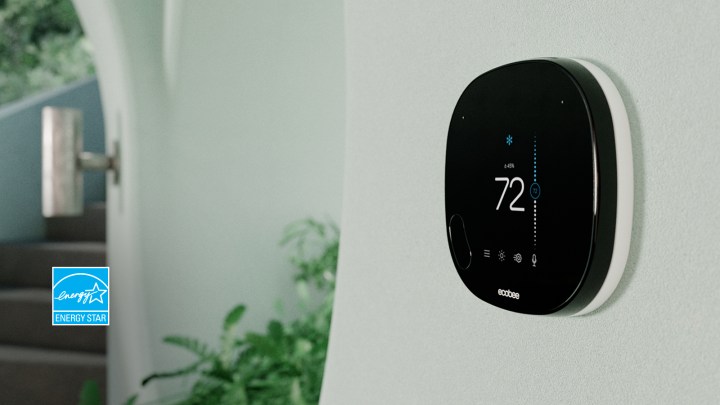After a year-long early access period, Google’s Nest Renew program is now available on compatible Nest thermostats across the continental U.S. Nest and smart thermostats broadly have applied their intelligence to maintaining utmost home comfort while keeping bills low. Renew aims to apply those smarts to tapping into available renewable energy when supply is highest, and purchasing green energy credits when it isn’t.
Time of use billing isn’t new, even when it comes to smart home energy management systems. Just like Nest, major manufacturers like Ecobee make a case for saving power (and in turn saving money and the environment) by preferring to fire up the thermostat during off-peak hours. Nest has historically shown when it’s saving power with a little leaf icon on the screen. Thermostats that can adjust to shifts in electricity rates show a new kind of relationship the connected home can have with utilities.

When your home is able to communicate with your electrical provider, not only do you get the end benefit of lower rates, but the grid is also able to adjust generation to meet demand with more agility. That makes renewable sources like wind and solar more viable since their availability fluctuates. It also means power sources that rely on fossil fuels can minimize waste. In either instance, many government agencies and utility providers already give away subsidized smart thermostats just to lower electrical demand.
The advent of home solar has already helped advance this smart grid vision. Since solar panel owners become generators in their own right, any attempt to sell power back necessitates communication standards. “My home has this much power to give, how much does my neighbor need?” is a big shift in dynamic from utilities simply piping power to all of the homes that need it. As a result, many solar-powered homes create an excess of power that is then sent back into the grid and distributed where it’s needed.
These more complex interactions between homes and utilities will need a communications backbone if we want to have resilient and distributed power generation. Many utilities aren’t especially keen on ushering in this kind of future, however. After all, they would in the end be splitting their energy revenue with a community of independent generators.
Smaller companies may be able to land isolated partnerships with utility providers, but only a behemoth like Google has the scale to push the entire American grid to be smarter. Not only does it command one of the most popular smart thermostat brands out there, it can also push partners to improve grid communications through a shared Google Home platform. That opens the door to plenty of other product categories, too. Sure, your air conditioner uses a lot of power, but so does your fridge. Is it talking to the grid yet? Few companies have the ability to standardize such a broad base of devices the way Google can.
In the grand scheme of Google, or even next to today’s announcement of a new Nest doorbell, Nest Renew might feel like small potatoes, but a big company doing small things can still affect significant change. The electrical grid is a slow thing to evolve. We need the heavyweights of the tech world to take on this challenge in order to get anywhere. With any luck, Google’s activity in this sphere will spur competitors like Apple and Samsung to action in neighboring product categories. Successful implementation of Nest Renew in the U.S. also bodes well for similar systems to advance in other regions.
For now, we’re eager to see what the pick-up is like for Nest Renew. A monthly premium subscription to offset the carbon used in your home’s heating is a tall order. Even if that’s too much to ask, the free utility of opting for renewable energy sources is a step in the right direction. If you’re hunting around for a new smart thermostat, now is a great time to see what’s available. We’ve got a roundup of the best smart thermostats out there. Regardless of whether they’re helping your home use more renewable energy, smart thermostats will save you money on your electrical bill.
Editors' Recommendations
- The Nest Thermostat is the first smart thermostat with Matter support
- Sustainable with Google 2021: Nest Renew, traffic light efficiency, and more
- 7 things you didn’t know your Google Nest Hub smart display could do




